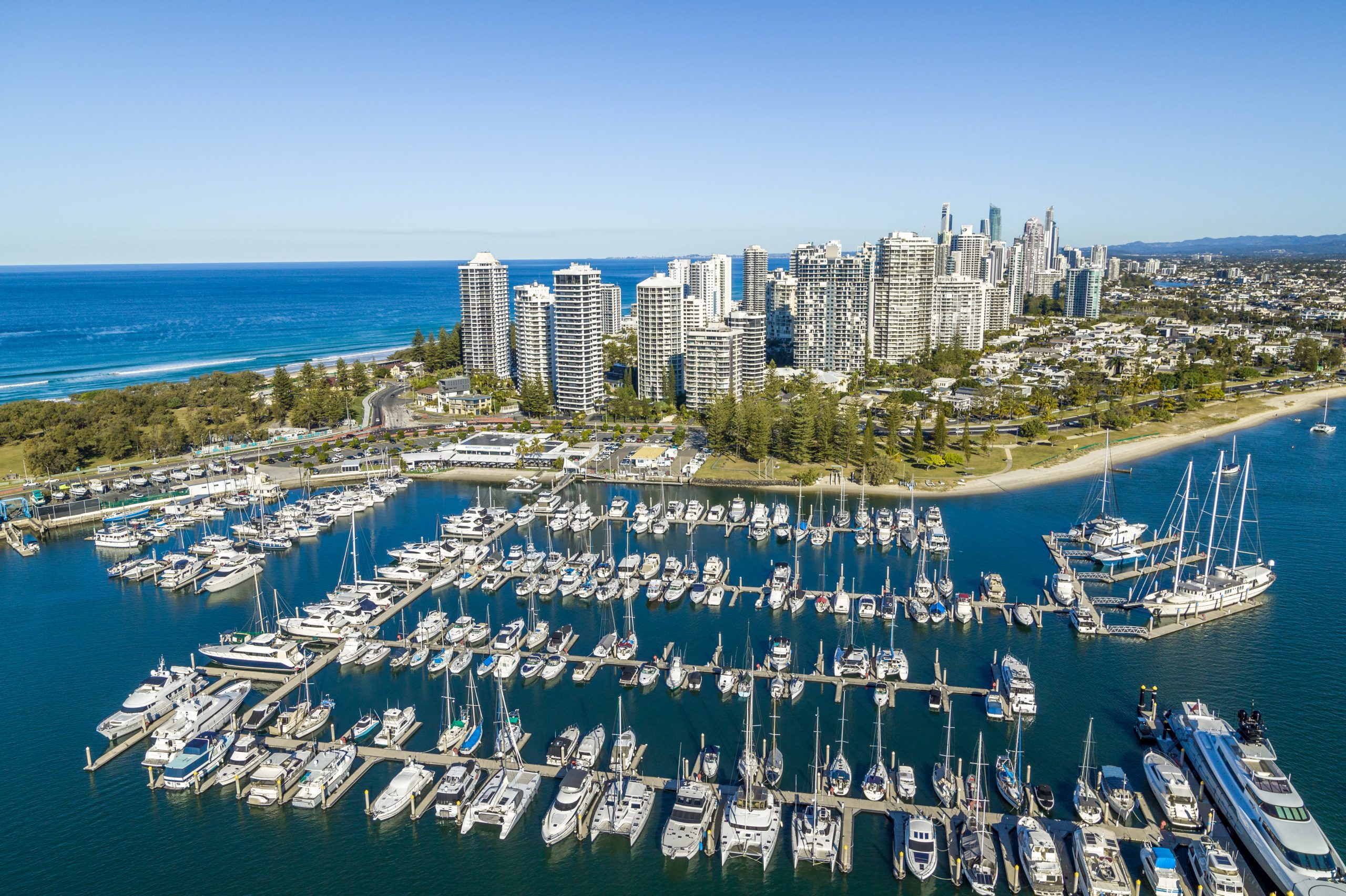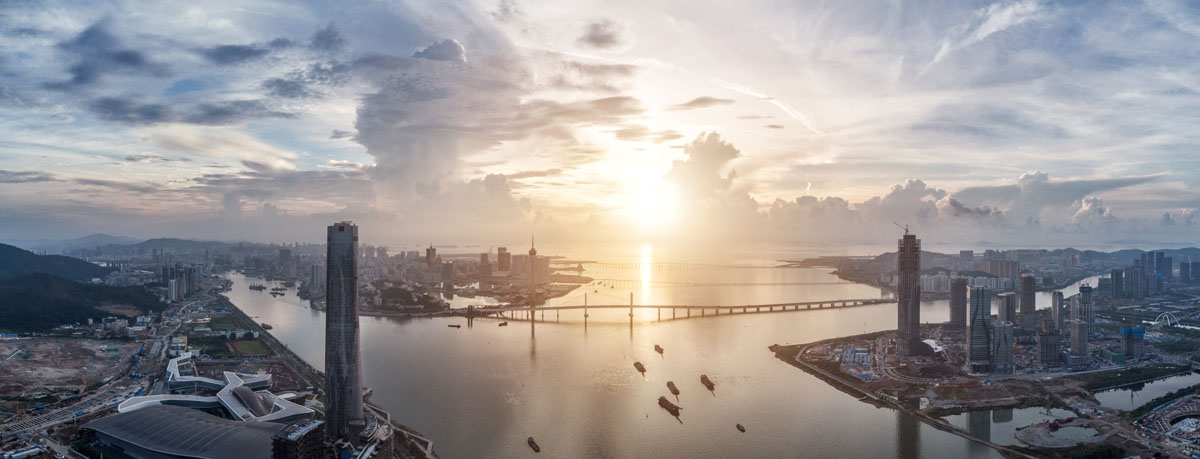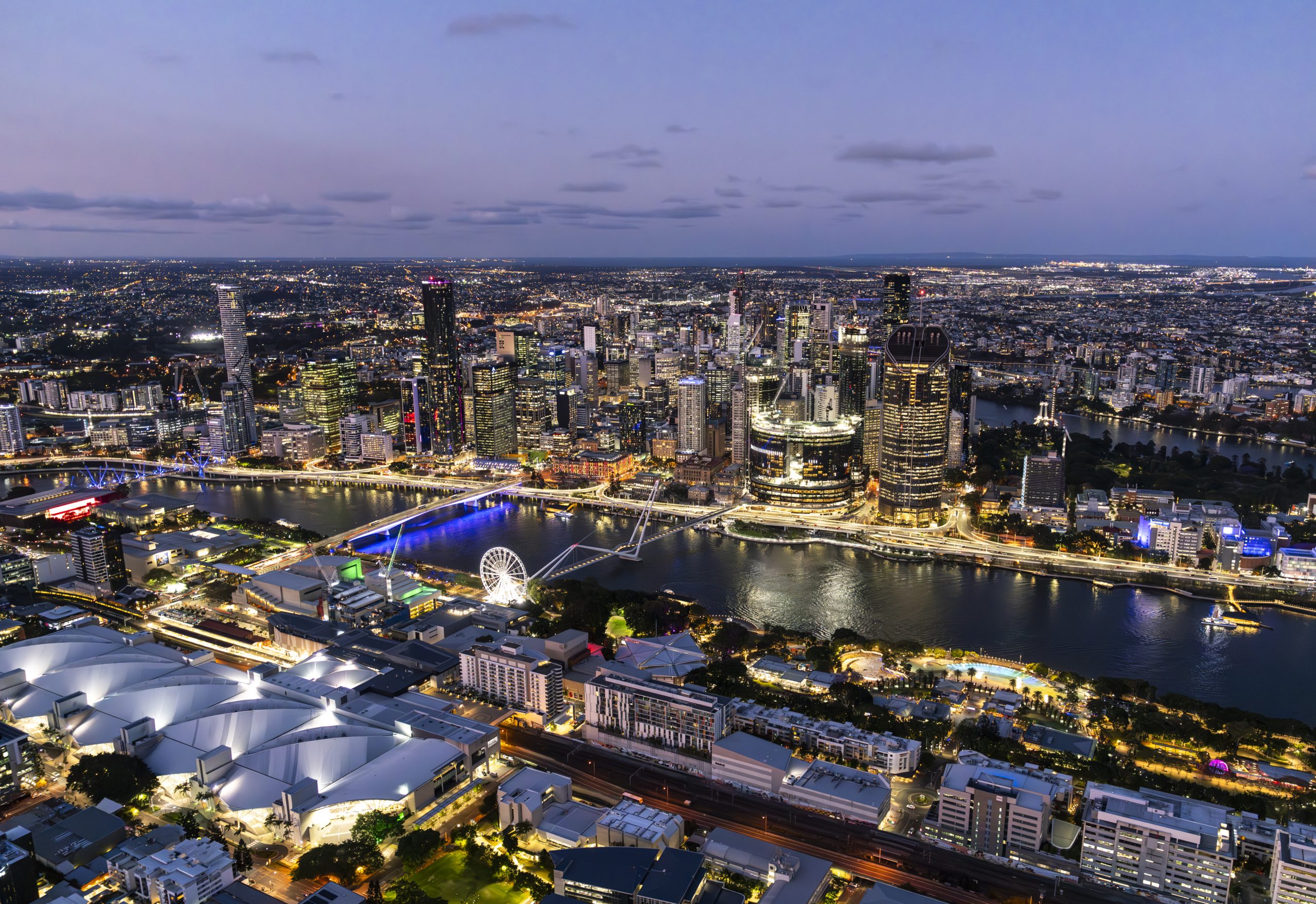Something old, something new” is the motif for emerging event locations in China – showcasing ancient architecture, cuisines and cultures with insights into China’s new millennium identity.
Although Shanghai and Beijing remain China’s leading events destinations – exemplifying the nation’s economic growth and renaissance in culture, fashion, and entertainment – event managers are being challenged to create unique experiences beyond these two cities.
In the Yangtze River Delta region, Shanghai continues to be the market leader, but two neighbouring historic cities, Hangzhou, Suzhou, are carving eye-catching niches. A third, Ningbo, is touted as one to watch.
All three offer picturesque natural scenery, close proximity to Shanghai, five-star hotels with many new properties under construction – and attractive pre- and post-tour options.
The reasons are three-fold.

First, many inbound corporate clients have “done Beijing and Shanghai” and are seeking diverse locations to experience 21st-century China. Second, China-based companies are using incentives and away-breaks to enhance team morale and, crucially, retain staff in a competitive labour market.
Third, standards of hotels, venues and leisure infrastructure in leading “second-tier cities” are improving fast.
A fourth factor is emerging: developing markets. “Early this year, we began seeing briefs and client requests coming through for locations outside of Shanghai and Beijing,” says Anna Patterson, director of events for Offsite Connections. “Clients realise for B2B and B2C, there are new developing markets with audiences able to purchase their products. Some clients, such as automotive and financial companies, are setting up offices or opening showrooms in these locations – and subsequently have events and marketing communications activity needs in Hangzhou and Suzhou.”
Hangzhou, Suzhou and Ningbo all have thriving local economies. Hangzhou and Ningbo both have international airports, and all three are accessible by high-speed train from Shanghai.
Ningbo is one of China’s top-five sea ports and, from late 2008, will have a direct road link to Shanghai via the new Hangzhou Bay Bridge.
Hangzhou, closely followed by Suzhou, has the best tourism infrastructure, retail, dining and nightlife and conferencing and event venues. They are two of China’s most attractive cities – and share their own eulogy: “In heaven there is paradise, on earth there is Suzhou and Hangzhou.”
“In our experience,” says Offsite Connections’ Anna Patterson, “Suzhou has more of a cultural focus in events we have conceived, whereas Hangzhou seems to be more business-oriented.
“West Lake in Hangzhou is very much a focus for clients during the summer for boating activities, within a conference programme, and Suzhou is often selected by clients for partners’ programmes, due to the silk industry, gardens and local crafts which provide interest for spouses,” she says.
HANGZHOU
THE LAKESIDE RETREAT
Located beside the beautiful West Lake, and fringed by hills and parks, Hangzhou boasts a photogenic setting. A fast-growing commercial city, it has a handful of 5-star hotels, with more under construction – including a Banyan Tree resort and two Marriott hotels. It has an airport and expressway and high-speed rail connection with Shanghai.
The hills around Hangzhou shelter many historic temples and pagodas, while its lush pastures grow one of China’s favourite beverages: Longjing tea. Tea ceremonies are held at the city’s Tea Museum. The area offers many options for pre- and post-event trips and partner programmes during a business conference. A thrilling outdoor night-time theatre show, Impressions on West Lake, has been produced by Chinese movie directors, Wang Chaoge, Zhang Yimou and Fan Yue (www.yxxh.com.cn)
Meanwhile, Qiantong Airlines is teaming up with Air France to offer a direct Hangzhou-Paris flight, which would make it mainland China’s first private airline with an international route.
Client demand is increasing for Hangzhou events, says Stefano Rittela, director of Shanghai-based HLD Event Services.
“We are noticing a growing awareness for alternative locations and clients are starting to inquire about Hangzhou – as well as Suzhou – as practical options,” Rittela says.
Major companies have already utilised Hangzhou’s charms. In 2005, couture house Dolce & Gabbana launched its first China store while, in July this year, Citibank launched its first branch in the city. Hangzhou-based Alibaba.com – one of China’s highest-profile online brands – holds regular off-site meetings in the city.
“After Shanghai and Beijing, Hangzhou is certainly one of the best options in China for conference groups,” says a spokesperson for a global consulting firm, which last year held an annual meeting in Hangzhou for 500 staff. “It is a uniquely Chinese city with a host of attractions that appeal to Chinese and international visitors, and has sophisticated infrastructure and services.”
HANGZHOU ATTRACTIONS
The West Lake
Views across the vast lake at dawn and dusk are fabulous. Its islands and causeway can be explored on foot, by renting a bicycle, or by hiring a small wooden boat steered by your own personal gondolier.
China Tea Museum
Located in the Fenghuang Hills, the Dragon Well enables visitors to watch Hangzhou’s famous Longjing (Dragon Well) tea being picked, processed and packaged.
Temple of the Soul's Retreat
One of China’s grandest Buddhist temples is hidden in the hills near the city. Its spectacular entranceway features a series of grottoes and caves with hundreds of Buddhist stone carvings leading the way to the Temple gates.
SUZHOU
CHINA’S GARDEN CITY
Suzhou revels in one of the world’s most marketable tourism tag-lines – “the Venice of the East” – bestowed by 13th century adventurer, Marco Polo. In those days, this moated city boasted an intricate network of canals and bridges. Though many have since been built over, Suzhou remains one of China’s foremost inland ports, and barges regularly traverse its narrow waterways.
Many tourists to this city of low-slung, white-washed houses and grey-slate roofs come for its classical Chinese gardens. Shading from the summer sun or admiring the winter mists, the landscaped gardens, designed to blend nature and human philosophy, are a year-round attraction.
Suzhou has several attractive parks and historic neighbourhoods to explore, as well as pagodas and pavilions. Its newest attraction opened last October, IM Pei’s stunning Suzhou Museum in the heart of the old city. Located on the shores of Lake Tai, Suzhou is also a regional centre for pearls, which sparkle in stores across the city. Trips are possible to nearby pearl farms and the Wei Tang pearl market. For several centuries, silk has also been Suzhou’s staple industry, and this history is detailed at the Suzhou Silk Museum on Renmin Lu.
“We have seen an increase in product launches and incentives – domestic and international,” says Anna Patterson, of Offsite Connections.
“One high-end automotive clients has planned a series of launches for the next four months in Suzhou. This event is designed as a cultural celebratory event, embracing the culture of Suzhou – and also reaching out to the community at large.”
SUZHOU ATTRACTIONS
The Gardens
Suzhou’s tranquil Chinese water gardens date from the 11th-19th centuries. Though there were once around 200 gardens, about 25 remain today – nine of which are listed as UNESCO World Heritage Sites. City maps guide you around the gardens, the most popular being the Humble Administrator’s and the Master of Nets Gardens.
Old city walls
The Pan Gate is the only remaining part of the 3rd-century city wall. It is a handsome and imposing edifice that once served as a protective fortress – and yields fine views over the old city and, to the west, the soaring towers and office blocks of “New” Suzhou.
Suzhou museum
Opened in late 2006, this 1.5-hectare museum was created by Chinese-American architect I.M. Pei, the man who grafted a glass pyramid onto the Louvre in Paris – whose family hails from Suzhou. This contemporary architectural masterpiece blends Suzhou’s traditional whitewashed house design with sharp angles and plenty of glass, granite and water. www.szmuseum.com
NINGBO
ONE TO WATCH
Sitting at the confluence of three rivers – the Fenghua, Yong and Yueyao, which meet in the downtown area – Ningbo is carved around its aquatic assets. It also possesses one of China’s only natural deepwater ports. Last year, Ningbo topped a research poll as China’s best city to live in.
The re-landscaped city centre is focused around Tianyi Square and features parks, public spaces and a waterside Bund, which predates its more famous Shanghai namesake and features restaurants, bars, offices and apartments. Ningbo also has a new Grand Theatre and a Convention and Exhibition Centre.
Ningbo airport has regular flights to Shanghai, Hong Kong and other Chinese cities, and new internationally managed hotels are springing up. The Howard Johnson Plaza and Sheraton are both newcomers, with Marriott, Park Hyatt and Shangri-La forthcoming. Tourism development is a key focus, with easy access to Zhoushan Island and the nearby archipelago, including the Buddhist island of Putuoshan. Also scheduled for development are the nearby Dongtian lake and several golf courses.
From next year, Ningbo will be connected to Shanghai via the world’s longest cross-sea bridge over Hangzhou Bay. Though currently playing catch-up with its two better-known neighbour cities, Ningbo is preparing for considerable economic and tourism growth once the 36km, US$1.42billion bridge opens.
FAST FACTS
Hangzhou
• Population 6.6 million
• 150km south west of Shanghai (85 minutes by fast train)
• Political, cultural and economic capital of affluent Zhejiang province.
• Located beside Xi Hu (West Lake), one of China’s most cherished natural attractions.
• Hangzhou Xiaoshan Airport (www.hzairport.com) has flights to 40 Chinese cities, plus Hong Kong, Singapore, Macau, Tokyo, Osaka, Seoul and Busan.
• Excellent rail and road connections.
• A first subway line will be completed by 2010, with five lines by 2020.
• The 2006 World Leisure Expo was Hanghzou’s largest public event.
• For tourism information, visit www.gotohz.gov.cn.
Ssuzhou
• Population 5.9m
• 80km west of Shanghai (30 minutes by fast train)
• UNESCO-protected Chinese water gardens.
• Marco Polo once called the city the “Venice of The East.”
• Hi-tech and electronics companies are clustered in its five development zones.
• Historically famous for its silk industry.
• The new Suzhou Museum was created by Chinese-American architect IM Pei.
• Nearby attractions include Lake Tai and canal villages of Zhouzhuang, Tongli and Luzhi.
• Tourism information: www.suzhou.gov.cn
Ningbo
• Population 5.4 million
• 150km south of Shanghai.
• Ningbo means "calm wave" in Chinese.
• It was one of China’s Five Treaty Ports established by foreign powers in 1842.
• Ningbo Airport(w ww.ningbo-airport.com) has flights to all major Chinese cities, Hong Kong, Seoul, and Macau.
• Its natural deepwater port ranks fourth in China, and in the world’s top 15.
• Next year, the Hangzhou Bay Bridge will link Ningbo with Shanghai.
THE PROFESSIONALS
HLD Events
Contact: Stefano Ritella
Email: sritella@hldevents.com
OffsiteConnections
Contact: Anna Paterson
Wild china
Contact: Nicole Zhang
YANGTZE’S HOTEL HIGHLIGHTS
HANGZHOU
Hyatt Regency
This contemporary 390-room lakeside hotel is ideally situated adjacent to the new Hubin Lu promenade, Euro Street luxury shopping centre and leafy Xihu Tiandi dining district. It’s also close to the city’s main offices and banks.
The Residence is Hangzhou’s leading meetings venue, comprised of a junior ballroom, three boardrooms and five dining rooms. Designed to feel more residential than corporate. It hosts a variety of private dinners, board meetings, product launches, cocktail receptions and corporate meetings. Hotel guests can also dine at the courtyard-style 28 Hubin Road restaurant, specialising in Hangzhounese cuisine. And don’t miss the fantastic views from the executive club’s rooftop terrace garden.
Shangri-La
Opened in in 1984, Shangri-la’s first hotel in mainland China is the undisputed doyenne of Hangzhou’s hotel scene. Although the rooms are less contemporary than its newer competitors, the 382-room Shangri-La exudes classical appeal.
Residing on a beautiful part of the lake near the causeway that splices its centre, and overlooking Solitary Hill Island, it offers fine views – especially at sunset.
Guests can enjoy a genuine closeness with nature, as well as professional business services. The health club is excellent, and the public areas and restaurants are spacious and geared to optimizing the hotel’s waterside location. Bicycles can be rented for exploring the lake’s cycle paths or wending your way around the 40-acre property.
Hangzhou Xihu State Guesthouse
A less orthodox option is this state-run villa complex in large, attractive gardens on the quiet west side of the lake. The Xi Hu Guest House has historically been the lakeside retreat of China’s Communist Party elite, and 40 foreign heads of state have also stayed here. Spread across eight buildings, there are 178 rooms, a golf course, modern meeting facilities, tennis courts, an indoor pool and car rental services
Suzhou
Sheraton Suzhou & Towers
Opened in 1998 in the heart of the Old City, near the Pan Gate, this 407-room hotel is designed in the style of Suzhou’s traditional architecture, featuring whitewashed walls, upturned slate-grey roofs and its own landscaped garden and pagodas. The best rooms offer views of the 1,000-year old Ruigang Pagoda.
The hotel offers 1,000 square-metre of meeting space, including the 486-square-metre Panmen ballroom, two conference rooms, and six boardrooms. The intricately designed hotel gardens offer an attractive reception space, particularly when lit up at night.
Shangri-La
Located on the 28th-51st floors of the Metropolitan Tower, this brand new 390-room property is billed as the first international deluxe hotel in Suzhou’s Hi-Tech Industrial Development Zone. The lounge is located on the 48th floor, and affords excellent across the New and Old city of Suzhou.
It has six restaurants and bars, and the meeting and banquet facilities include a 1,310-sq- m pillarless Grand Ballroom for up to 1,200 guests for cocktail receptions or 800 for dinner banquets. A second ballroom can cater for 350 reception guests or 220 for sit-down dining. It is the only hotel in the city with an auditorium, and can host up to 120 guests for lectures and training sessions. Tour services, limousine rental and bicycle hire are available.
Garden Hotel Suzhou
History abounds at this recently renovated 48,000 square metre villa complex, set in splendid gardens. The guest book at 238-room Garden Hotel – just reopened after a RMB260m revamp – features several world leaders, including Jiang Zemin, Zhou Enlai, Margaret Thatcher and Jimmy Carter. Modern conference facilities include a 660-sq-m pillarless multi-function room for up to 400 guests, two meeting rooms, a multi-media boardroom and three smaller boardrooms. There’s also a gym, signature spa, outdoor tennis courts and table tennis room.
NINGBO
Howard Johnson Plaza
Opened last October, the 450-room Howard Johnson Plaza hit its stride quickly, launching the first Ningbo Oktoberfest – with a German band, imported beer and a 600-people packed house for six consecutive nights. It followed up with themed Mardi Gras and European Rock Festival events, and was recently awarded the chain’s International Hotel of the Year accolade.
Located near the riverfront on the bustling Liuting Street, it offers fine views over this attractive city. Its meeting facilities include 1,210 sqm of event space, divided into a 615 sqm ballroom and seven function rooms.
Sheraton Ningbo
Opened last year, the 380-room Sheraton Ningbo was formerly known as Portman Plaza Ningbo. Located in the downtown area, it has seven F&B outlets and its eyecatching glass pyramid roof was apparently inspired by the Grand Louvre Museum in Paris.
Meeting facilities include 11 convention halls. The Grand Ballroom can be partitioned into two rooms, and the circular International Conference Hall holds 400 people. An attractive theming option is the duplex Zenses Spa, inspired by both Western and Oriental beautifying and wellness techniques. There’s also a rooftop tennis court.
REVIEW
Wild at heart
“Hangzhou and Suzhou are attractive for creative, off-the-beaten-path corporate events,” says Yam Ki Chan, Business Development Manager of Beijing-based Wild China, a travel and destination management company. “The infrastructure is good and traffic is lighter than Shanghai, which helps as creative events often involve busing guests between locations.”
Last year, Wild China created a “Wild Race” – based on the Amazing Race television show – for senior managers of Singapore Telecom. The one-day “race” began in Suzhou, where clients were divided into teams and asked to solve a series of clues and complete challenges taking them through the old city and on to the canal village of Zhouzhuang, before finishing in Shanghai. The one-day event was, Chan says “a great success, and an example of using multiple locations and historic venues in a creative manner and meeting the client objective of team building.”
In Hangzhou, Wild China managed a Greater China event for a leading consulting firm. The morning plenary meeting at the Peoples’ Hall was followed by break-out meetings at selected tea houses around West Lake. “We basically hired out the whole lake for the afternoon, so clients could move between venues, each hosting an individually themed session,” Chan says. An evening banquet, catered by Hyatt Regency, was held at the Qian Wang Temple – the first time it had been used for a corporate event.


